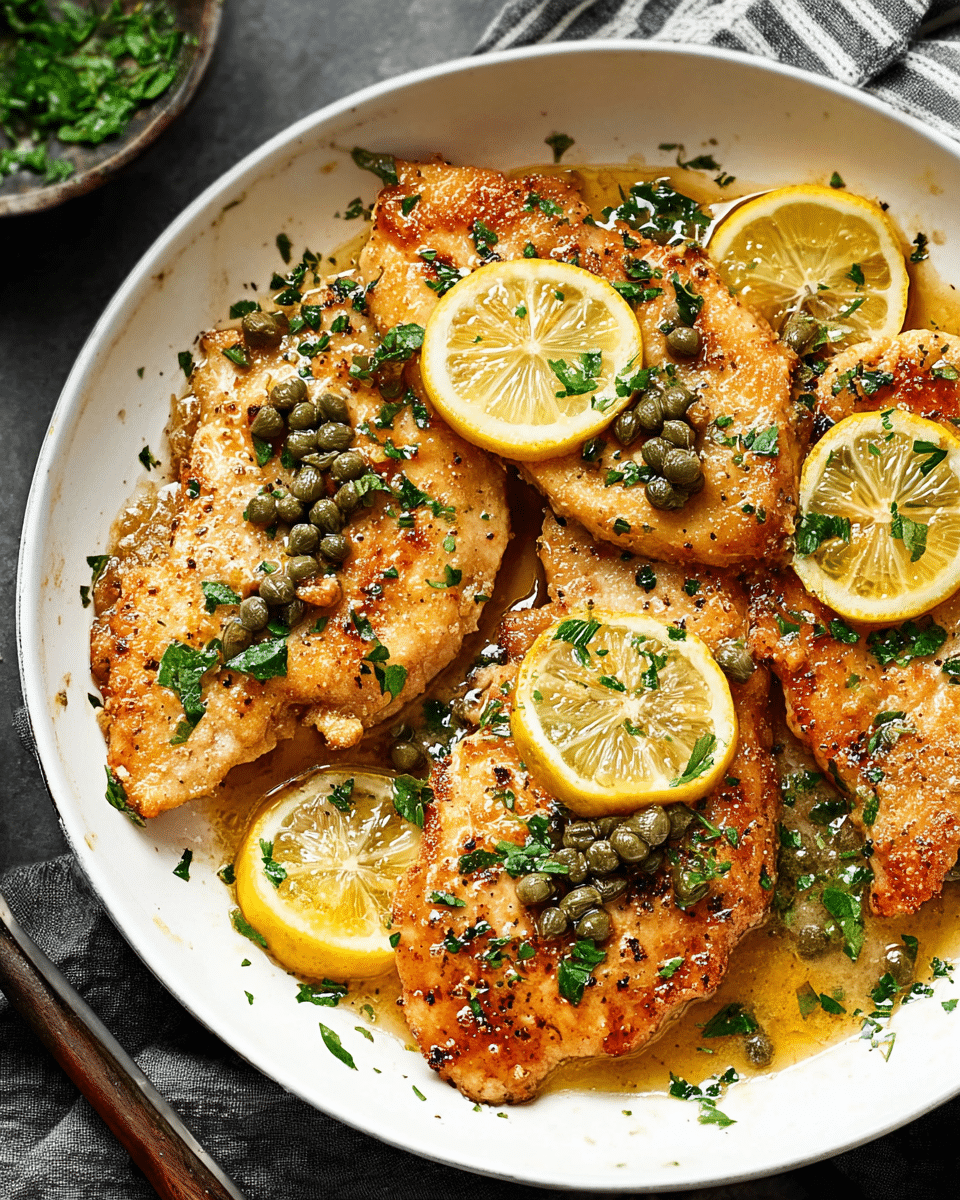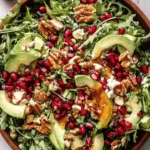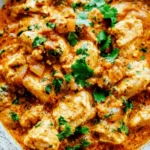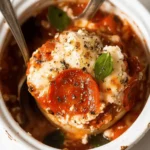The timeless elegance of Chicken Piccata lies in its simplicity. Golden pan-seared chicken is elevated with a buttery, lemon-forward sauce enriched by briny capers and fresh parsley. This dish delivers bright, bold flavors in every bite while staying light and balanced making it an ideal choice for both weeknight meals and special dinners.
Whether served over gluten-free pasta, zoodles, or a bed of steamed vegetables, this Chicken Piccata offers versatility and classic Italian comfort. It’s a dish that requires minimal ingredients but yields maximum flavor. Plus, it’s naturally gluten-free and can be adjusted for low-carb or dairy-free lifestyles.
Full Recipe:
Ingredients:
-
2 boneless, skinless chicken breasts, halved horizontally
-
Salt and freshly ground black pepper, to taste
-
½ cup almond flour (or all-purpose flour)
-
2 tablespoons olive oil
-
2 tablespoons unsalted butter
-
⅓ cup fresh lemon juice (about 2 lemons)
-
½ cup chicken broth
-
¼ cup capers, rinsed and drained
-
2 tablespoons chopped fresh parsley
Directions:
-
Season the chicken breasts with salt and pepper. Dredge them in almond flour, shaking off the excess.
-
In a large skillet, heat olive oil over medium heat. Add chicken and cook 3–4 minutes per side or until golden brown and cooked through. Remove and set aside.
-
In the same skillet, reduce heat to medium-low and add butter, lemon juice, chicken broth, and capers. Bring to a simmer.
-
Return chicken to skillet and cook for 3–4 more minutes, spooning sauce over the top.
-
Sprinkle with fresh parsley and serve hot with a side of vegetables or pasta.
Prep Time: 10 minutes | Cooking Time: 20 minutes | Total Time: 30 minutes
Kcal: 280 kcal | Servings: 4 servings
Chicken Piccata is one of those timeless recipes that marries simplicity with bold, memorable flavor. Traditionally made with veal, this chicken version has become a beloved variation around the world, thanks to its balance of citrusy brightness and savory depth. At the heart of the dish is pan-seared chicken simmered in a luscious lemon-butter sauce, punctuated with briny capers and fresh herbs. It’s an effortless yet elegant meal that comes together in under 30 minutes, making it perfect for both weeknight dinners and special occasions.
The History and Evolution of Chicken Piccata
Piccata, which comes from the Italian word “piccare,” meaning “to prick or pierce,” originally referred to thin slices of veal cooked in a reduction of lemon juice, butter, and capers. As the dish gained popularity in American kitchens, chicken became a more accessible substitute and the recipe took on a new life. While veal piccata is still served in traditional Italian restaurants, Chicken Piccata has arguably surpassed it in fame, especially among home cooks looking for a quick, flavorful meal.
What makes this dish truly stand out is the way it captures the essence of Mediterranean cuisine: fresh ingredients, minimal fuss, and maximum flavor. The combination of tangy lemon juice, rich butter, and the salty pop of capers creates a sauce that’s both light and indulgent. It’s a perfect illustration of how simple ingredients can come together to create something greater than the sum of its parts.
Why You’ll Love This Dish
1. Quick and Easy Preparation
Chicken Piccata is ideal for those busy days when you want something satisfying but don’t have a lot of time. The chicken cooks quickly when sliced thin or pounded flat, and the sauce takes just a few minutes to reduce and thicken. You don’t need any specialized culinary skills or hard-to-find ingredients to make it work.
2. Light Yet Satisfying
Despite the butter-based sauce, Chicken Piccata is not overly rich. The bright acidity of the lemon juice and the pungent burst of capers provide a refreshing contrast, making this dish feel lighter than many creamy chicken recipes. It’s filling without being heavy.
3. Versatile for Different Diets
This dish can easily be adapted to suit various dietary needs. Use almond flour instead of traditional flour for a gluten-free version, or substitute dairy-free butter for a lactose-free adaptation. It’s also naturally low in carbohydrates, which makes it a favorite among those following keto or paleo lifestyles.
4. Restaurant-Quality Flavor at Home
There’s a certain elegance to Chicken Piccata that makes it feel like something you’d order in a high-end Italian restaurant. Yet, it’s easy enough to prepare in your home kitchen with minimal equipment. Serve it with a garnish of chopped parsley and lemon slices, and you’ll have a meal that looks as good as it tastes.
Tips for Perfect Chicken Piccata Every Time
To get the most out of your Chicken Piccata, keep these helpful tips in mind:
- Use Thin Chicken Cutlets: Thin slices cook evenly and quickly, helping you avoid overcooked or dry chicken. You can slice chicken breasts in half horizontally or pound them flat with a meat mallet.
- Don’t Skip the Capers: Capers might seem like a minor detail, but they’re essential for that signature Piccata flavor. Their salty, briny quality balances out the richness of the sauce and complements the acidity of the lemon.
- Fresh Lemon Juice Is Key: Bottled lemon juice won’t cut it here. Use freshly squeezed lemon juice for the best flavor—it’s brighter and more vibrant.
- Deglaze the Pan for Extra Flavor: After cooking the chicken, there will be golden bits stuck to the skillet. Pouring in the lemon juice and broth and scraping the bottom releases these flavorful bits into the sauce.
- Finish with Butter for a Velvety Sauce: Stirring in butter at the end adds body and silkiness to the sauce, elevating it to restaurant-level quality.
Serving Suggestions
Chicken Piccata is incredibly versatile when it comes to serving options. Here are a few ways to round out your meal:
- Pasta: Serve over angel hair or linguine to soak up the lemony sauce.
- Vegetables: Pair with steamed asparagus, green beans, or roasted broccoli for a light side.
- Potatoes: Mashed or roasted potatoes are a hearty option that complements the tangy sauce beautifully.
- Grain Bowls: Serve over farro or quinoa for a wholesome, Mediterranean-inspired bowl.
For a low-carb meal, consider serving Chicken Piccata alongside cauliflower rice or a fresh arugula salad drizzled with olive oil and balsamic vinegar.
Make-Ahead and Storage Tips
One of the perks of Chicken Piccata is that it stores and reheats well, making it a great option for meal prepping.
- Refrigerator: Store leftovers in an airtight container for up to 3 days.
- Freezer: You can freeze cooked chicken and sauce separately for up to 1 month. Thaw in the refrigerator overnight and reheat gently on the stove.
- Reheating: Warm in a skillet over low heat, adding a splash of chicken broth or water if the sauce has thickened too much.
Keep in mind that reheating too aggressively can dry out the chicken, so low and slow is best.
Variations to Try
Once you’ve mastered the basic Chicken Piccata, feel free to experiment with your own twist on the dish:
- Add White Wine: Deglaze the pan with dry white wine instead of (or along with) chicken broth for extra depth.
- Include Garlic: A few minced garlic cloves sautéed before adding the liquid adds another layer of flavor.
- Try with Fish: This lemon-caper sauce pairs wonderfully with white fish like tilapia or cod.
- Make It Creamy: Add a splash of cream or coconut milk for a richer, silkier sauce.
The beauty of Chicken Piccata is that it can be as traditional or innovative as you like, adapting to your tastes and dietary needs with ease.
Conclusion: A Dish That Delivers Every Time
Chicken Piccata is a dish that combines culinary sophistication with everyday practicality. It’s light yet indulgent, classic yet customizable, and bold in flavor while using only a handful of ingredients. Whether you’re cooking for your family, hosting guests, or just trying to elevate a regular weeknight dinner, this recipe delivers every time.
Its lemony freshness and buttery smoothness will make it a regular in your cooking rotation. And the best part? You can go from prep to plate in under 30 minutes. With Chicken Piccata, elegance doesn’t require hours in the kitchen just a few simple steps, a hot skillet, and the right ingredients.
If you haven’t added this recipe to your weekly meal plan yet, now is the time. One bite, and you’ll see why it’s stood the test of time across cultures and cuisines.






